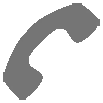If a tree falls in the woods, does it make a sound? Not to get too philosophical, but the perception of sound can leave a chasm for CPAP users as well. Since we all perceive sound differently, user reviews will vary and might leave you feeling confused. There are additional factors to consider even if a machine is advertised as “quiet.” Below you’ll find useful tips and advice to consider when trying to achieve quieter CPAP therapy.
CPAP Decibel Levels
Decibels are a unit used to measure the intensity of a sound. All CPAP machines have a decibel (dB) rating specified from the manufacturer. On average most machines sit right around the 30dB level mark, like the sound of raindrops. To 
Most commonly when users make a switch to a newer machine it sounds louder when in fact it’s not. Even though they may be equal as far as volume level goes, its important to note each CPAP model has a unique and distinct sonic quality. After a few weeks of use it becomes less of a disruption, as it’s normal to get accustomed to the sound.
How Can I Make CPAP Therapy Less Noisy?
Cleanliness: Changing out your CPAP filters will impact the noise level and performance of your machine. By keeping out dirt and dust from your machine motor, you are ultimately allowing the machine to run more smoothly which will help you get quieter CPAP therapy and sleep more soundly.
Location: You don’t have to place your CPAP directly on your nightstand. Placing your machine lower than the bed or ear level may reduce the vibration and sound heard. If necessary, longer hoses are available to accommodate placing your machine further away. Be aware, that longer hoses can increase the likelihood of rainout if you are using it with a humidifier.
Humidifiers: On some smaller machines that are frequently reviewed as noisier, users have opted for a standalone humidifier to give more distance from the machine. Plus, the sound is also diminished as it travels farther from the machine to the mask through more tubing. Machines with Integrated humidifiers can be a quieter option as it condenses some sound when attached.
Masks: Your machine is not the only thing contributing to the sound level. Most of the noise you’ll hear is actually the air traveling through your hose and into your CPAP mask. So yes, it’s possible to have a quiet machine but a noisy mask. Since there is no way from a
Prescribed Pressure: In addition to more of the common contributors above, some users have a louder machine due to their pressure settings or breathing pattern. Try placing your CPAP on a foam pad or towel to lessen the intensity of the vibration.
Tip: If none of these suggestions help keep a sound environment while you or your partner sleeps, then the last resort is to use some earplugs or a sound machine that produces ambient noises like rain, ocean, or waterfall sounds. Have a successful tip of your own? Leave a comment below to share any advice you may have for other users. Happy CPAP-ing!
For more information about Sleep Apnea and the best treatment options, please see our comprehensive guide to CPAP machines. This article will explain how CPAP machines are used to provide the most common treatment for Sleep Apnea as well as discuss the different options you have when choosing a new CPAP machine.




7 Responses
I use a longer hose and put my machine in the bottom drawer of my night stand. My spouse never hears the machine. A tube sleeve also does reduce noise from air traveling through the tube. Biggest noise would be the mask- with a good fit no problem. Noise not an issue in our family. (Biggest noise is mouth opening accidentally. Solved with a chin strap.)
@ Dick Loux
“Sounds” like you have everything pretty intact. Great suggestion on reducing the sound a bit further with a tube sleeve (SnuggleHose)!
Please let me know whether the velocity of the air can be increased in the Phillips automatic CPAP machine
@Prakash Iyengar
You can set it when the machine is set to CPAP mode, but not in Auto mode. Feel free to call 1 800 356 5221 if you continue to have problems. Thanks!
Prakash,
Yes, your machine is able to be adjusted. Please call one of our CPAP experts and they will be able to help walk you through how this can be done.
Our phone number is 1-800-356-5221.
Respironics RSMstar pro2
shows E47 and will not start!
Hello! Sorry for the delay in response. Please contact our Customer Service line and we can help you troubleshoot possible issues.
Our phone number is 1-800-356-5221. You may also email us at CPAP@CPAP.com. Our CPAP Experts will be happy to help!